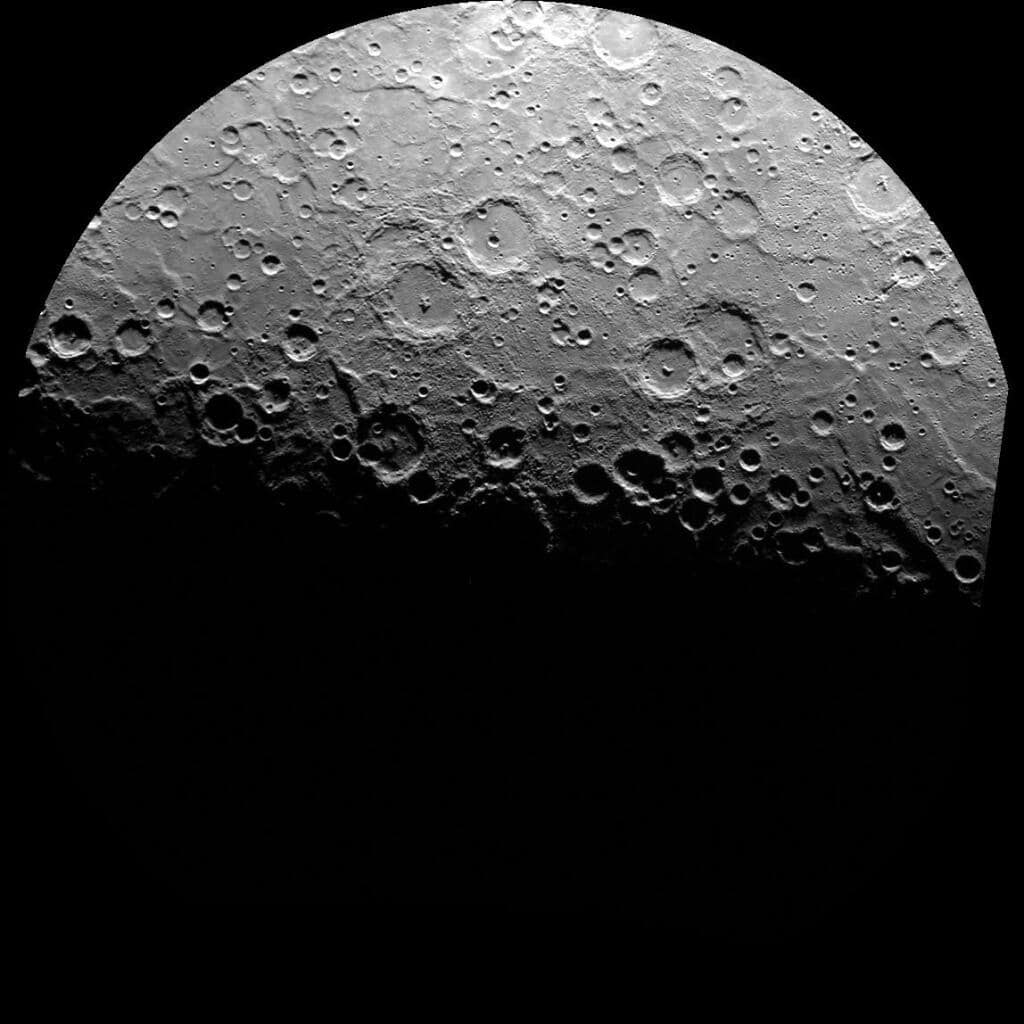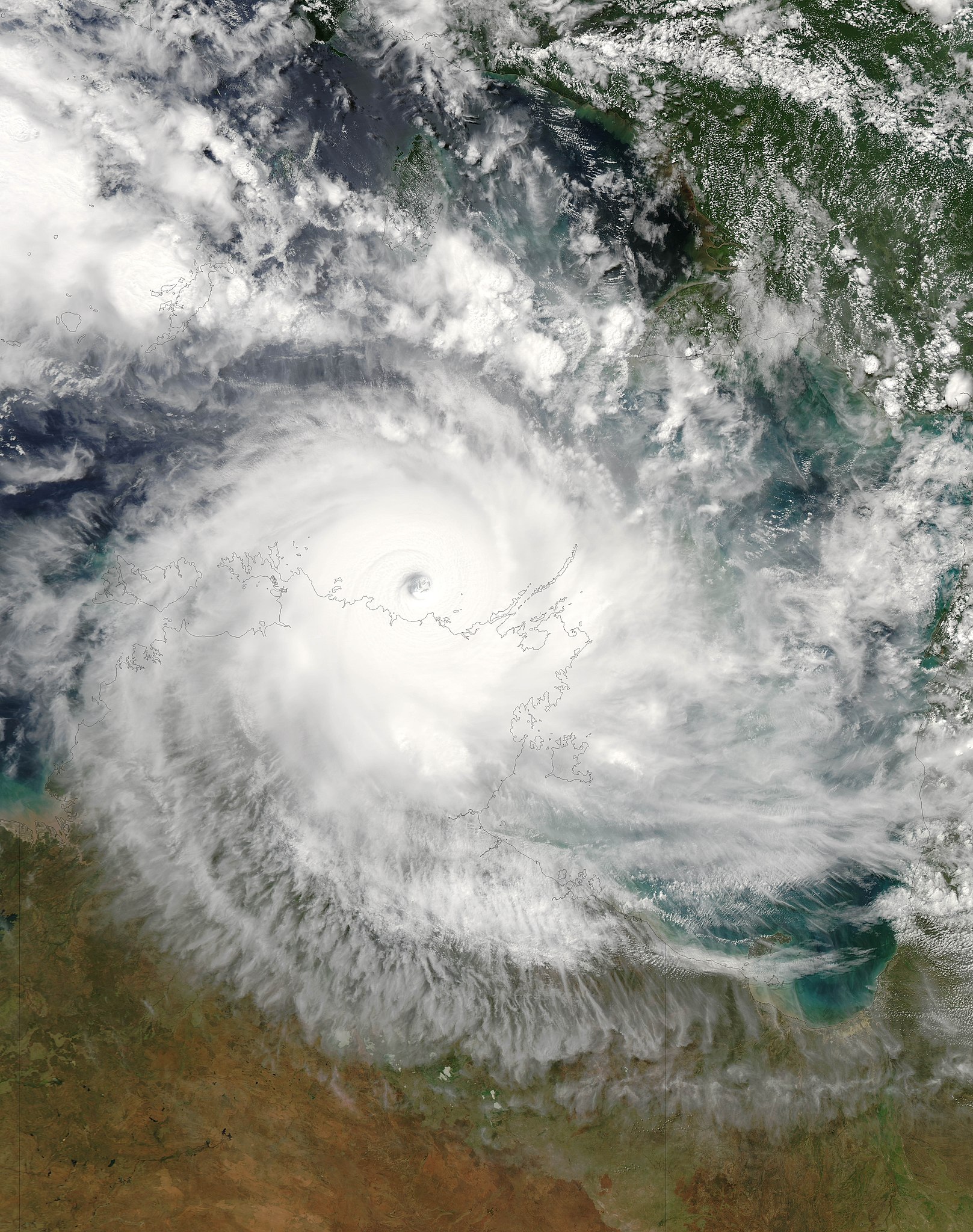
“An important lesson I have learned over the years is not to be afraid to ask if you hit a bump in the road or want something. You are not losing anything by just asking—and trust me, many great people out there are happy to help and give you feedback.”
—Haifeng Xiao
At a Glance
- Haifeng Xiao, originally from Tianmen City, China, is pursuing a Ph.D. at Technische Universität Berlin, Germany.
- His research has focused on predicting calving events in the Filchner-Ronne Ice Shelf in Antarctica and studying seasonal CO2 deposits on Mars’ polar caps.
- He chose this field of study to understand Martian volatile cycles better and has developed a novel approach for analyzing laser altimetry profiles to measure seasonal deposit thickness.
- He is working on measuring lunar tidal deformation and rotation using laser altimetry profiles, and plans to continue this work in Spain to study Mercury’s interior structure.
- His research contributes to a better understanding of the Martian climate, helps with future Mars exploration, and has implications for planetary geodesy studies. The field’s future includes using laser altimeters in planetary missions, and Haifeng encourages young readers to seek help and feedback when pursuing a similar career path.
Who are you, and where are you from? Where did you study, and where do you currently study?
Hi, my name is Haifeng Xiao. I was born in Tianmen City in China, also home to Lu Yu, who has written the book “The Classics of Tea” and is respected as “the Sage of Tea.” The city is also famous for its various steamed dishes, which are mouth-watering.



Previously, I obtained my master’s degree from Shanghai Tongji University, China. I am pursuing my Ph.D. in Technische Universität Berlin, Germany.
What do you currently study?
During my master’s studies, I focused on examining the evolution, for example, width, length, and depth, of large frontal fractures (approximately 50 km in length, 1.5 km in width, and 50 m in depth) within the Filchner-Ronne Ice Shelf in the Antarctic using a variety of satellite data. After drawing insights from past calving cycles, I predicted that the upcoming major calving event will occur approximately in 2051. Witnessing the calving on-site and verifying if the timing fits our conclusion will be exciting.

My Ph.D. theme revolves around the Martian polar caps—specifically, the seasonal carbon dioxide (CO2) deposits condensing onto the polar surface from the atmosphere. Due to the obliquity of its spin axis, Mars also has seasons like that on Earth. During fall and winter, the temperature can plunge below the frost point of carbon dioxide (~-125°C on average) and lead to snow and frost deposition. (For reference, the lowest natural temperature ever directly recorded at ground level on Earth is -89.2°C at the then-Soviet Vostok Station in Antarctica in 1983.)
An interesting note is that the CO2 snow particles are about 100 times smaller than terrestrial water ice snowflakes and lack the intricate symmetry and platy structure of the Earthly snow. The Martian snowfall thus would probably look like a fog rather than resembling a blizzard.
Meanwhile, during spring and summer, the temperature rises, and the CO2 deposits sublimate back into the atmosphere (changes from solid directly to gas). These seasonal deposition/sublimation processes exchange up to one-third of the atmosphere’s CO2 with the polar regions through these seasonal deposition/sublimation processes.
Why did you choose your field of study?
“This motivates my Ph.D. studies that utilized the dynamic topographic heights recorded by the Mars Orbiter Laser Altimeter onboard NASA’s Mars Global Surveyor spacecraft to look into the thickness variations of the seasonal deposits.”

Constraints on the amount of seasonal deposits can shed essential insights into the Martian volatile cycles. While the lateral extent of the seasonal deposits has been extensively mapped using satellite images and temperature measurements, its vertical evolution at high spatial and temporal resolution—that is, at local scales—has yet to be investigated.
This motivates my Ph.D. studies that utilized the dynamic topographic heights recorded by the Mars Orbiter Laser Altimeter (MOLA) onboard NASA’s Mars Global Surveyor (MGS) spacecraft to look into the thickness variations of the seasonal deposits.
A laser altimeter is an instrument that precisely measures the distance from an orbiting spacecraft to the planetary surface by measuring the time of travel of an emitted and then reflected laser beam; given the position and attitude of the spacecraft, the topographic heights of individual laser-illuminated footprints can be determined.
Unlike optical instruments, a laser altimeter does not require sunlight and can thus peer into the darkness at polar night. For MOLA, more than 8,000 profiles and 600 million footprints acquired from March 1999 to June 2001 are available, which span more than one full Martian year.
Tell us about one of your works that you are most proud of.
Previous approaches primarily relied on the height differences at the intersection points, or cross-overs, of a pair of laser ground tracks acquired at different time epochs. However, due to non-infinite sampling of the laser pulses (firing ten beams per second as of MOLA), the separation distance between consecutive footprints can be ~300 m. The Achilles heel of the cross-over approach is thus that heights at the intersections need to be interpolated from the bracketing footprints along each track, which can severely deteriorate the thickness measurements, especially when the interpolation distance is significant, and the terrain is rough.
Together with my supervisors and collaborators, I proposed a novel approach to aligning the laser altimetry profiles to analyze the dynamic topography sampled by MOLA. Using a jigsaw puzzle metaphor, the alignment is like shifting one piece to fit the rest. We shift the laser altimetry profile in 3-D dimensions to fit with a reference surface terrain model. This leads to precise extraction of the thickness time series of the seasonal deposits at grid elements of 0.5° in latitude and 10° in longitude. (Readers can find more information here and here.)
The proposed techniques can be a general framework for extracting surface height variations from laser altimetry profiles. We are now applying the established method to laser altimetry records to extract the Moon’s and Mercury’s surface deformation induced by the Sun’s and planetary bodies’ gravitational tidal forces. One could compare that to the ocean tides on Earth raised by the Moon. These are exciting research as the magnitudes of the tidal deformations depend on the target body’s interior structure and rheological properties, the measurement of which would let us peer into the heart of the Moon and Mercury, for example, the sizes of their inner cores.
What are you currently working on?
As stated earlier, the surface of a planet or satellite can deform in response to varying gravitational/tidal forces when cycling around the central object in an eccentric orbit. In such cases, the object gets stretched and squeezed regularly. Surface deformation in the vertical dimension can be considered a time-variable planetary shape.
Since December 2021, I have been involved in the Lunar Tidal Deformation from Earth-based orbital Laser Ranging (LDLR) program. I have done extensive experiments applying the proposed alignment procedure to the dynamic Lunar Orbiter Laser Altimeter (LOLA) profiles for measuring the Moon’s tidal deformation. Special attention is paid to how inhomogeneous crust thickness in the lunar nearside and farside (always hidden from Earth due to tidal locking) affects the Moon’s response to the tidal forces exerted by Earth and the Sun.

This year, I will move to the Institute of Astrophysics of Andalusia (IAA), CSIC, Spain, to quantify the tidal deformation and rotation state of Mercury using the dataset from the legacy Mercury Laser Altimeter (MLA) onboard NASA’s MESSENGER (Mercury Surface, Space Environment, Geochemistry and Ranging) probe and the BepiColombo Laser Altimeter (BELA) onboard ESA’s Mercury Planetary Orbiter (MPO) currently en route to Mercury. The outputs are expected to shed light on Mercury’s interior structure, especially the size of the solid inner core and thermal evolution.
In your opinion, what are your field of study’s best contributions to society?
Measurements of spatio-temporal thickness variations of the seasonal deposits can help us understand the Martian climate system and the global volatile cycles. Through snow/ice metamorphism that includes compaction by its gravity and re-crystallization, combined with a self-cleaning process in which the dust grains sink to the bottom, the seasonal deposits can gradually turn into a translucent slab of ice. That enables the sunlight to directly heat the substrate, triggering basal sublimation and building up high-pressure gas beneath. Eventually, the slab ice ruptures, and venting jets erupt.
These processes give rise to various geological features either observed at both poles, for example, dark spots, fans, and seasonal cracks, or unique to one pole, for example, seasonal furrows in the dune fields at the North Pole and araneiform terrain, or “spider,” at the South Pole.

As Mars has been previously perceived as a barren and dead world as its core should have cooled billions of years ago, it is enticing to observe that various morphological features actively shape the current Martian surface! The thickness of the slab ice is presumed to be a controlling factor behind the formation of these “geysers.” Thus, reliable thickness measurements of the seasonal deposits can help in modeling to decipher these enigmatic features.
The thickness measurements can also have implications for the trafficability of future rovers and helicopters that aim to study the Martian paleoclimate stored in the Polar Layered Deposits (PLDs), primarily composed of layers of water ice and fine sediments. It is like how the exposed layered geological deposits within the steep walls of the Grand Canyon can enable us to peer into Earth’s climate, reaching way back in time.
Seasonal deposit accumulation in the polar regions and post-glacial rebound, where landmasses rise after the overlaying ice/snow sublimates away, can affect the rotation of Mars. For instance, the spinning rate of an ice skater with arms stretched out can accelerate when they pull their arms in.
What do you see in the future of your field of study? Are there any exciting developments that you want to tell your readers about?
To my excitement, the feasibility of planetary Interferometric Synthetic Aperture Radar (InSAR) has been proved, and it has been proposed to measure Mars’ crustal deformation and thickness variations of its seasonal deposits. Meanwhile, dedicated gravity missions and laser altimeters have been advocated to measure the mass budget of the polar deposits. However, these prospect missions can be years or even decades away, and at the current stage, we have to make the best of what we’ve got.
I recently proposed using the shadow variations of the fallen ice blocks at the steep scarps of the North Polar Layered Deposits (NPLDs) to infer the thickness evolution of the Martian seasonal deposits. These scarps are situated at high polar latitudes where the thickest seasonal deposits can be expected. The basic idea is that the seasonal deposits should be thicker than the ice block if the latter is entirely covered by the former (a lower limit can thus be formed). Otherwise, the height of the ice block can place an upper limit on the depth of the seasonal deposits. Meanwhile, the widening of the ice blocks can be used as a proxy for the amount of directly condensed frosts.
As such, the proposed approach enables the decomposition of snowfalls and frosts’ contributions to the seasonal deposits’ thickness. To confidently capture these ice blocks with a diameter typically smaller than 2 m, we must rely on the High-Resolution Imaging Experiment (HiRISE) camera onboard NASA’s Mars Reconnaissance Orbiter (MRO), which features a spatial resolution of 25 cm at best scenarios.

I obtained a maximum thickness of ~1 m in late winter at a scarp at (85°N, 151.5°E) due to snowfalls, and an additional ~0.6 m due to direct condensation of frosts. The larger quantity of snowfalls than predicted by a snowing model may indicate that snow storms, at least local ones, can be much more frequent and violent than we thought.
As HiRISE has been continuously operating since 2006, this approach can also detect possible interannual thickness variations. Indeed, it is shown that the snowfall in 2021 can be ~0.36 m deeper than that in 2011. As the next step, I will apply the proposed approach to all ice block fields within the Martian North Pole to examine possible thickness inhomogeneity of the seasonal deposits.
What final message can you share with our young readers who may want to follow your research path?
High precision of the individual laser footprint heights makes laser altimeters ideal for planetary geodesy studies, which entails the precise measurement of planetary topography, rotation, tidal deformation, etc. For this, laser altimeters are continuously being added to current and planned planetary missions; for example, BELA is currently en route to Mercury, and the Ganymede Laser Altimeter (GALA) on board ESA’s Jupiter ICy moons Explorer (JUICE) is en route to Jupiter. So, in my opinion, starting an academic career is a pretty promising field.
An important lesson I have learned over the years is not to be afraid to ask if you hit a bump in the road or want something. You are not losing anything by just asking—and trust me, many great people out there are happy to help and give you feedback.

Insights From the Lab is the newest initiative from Modern Sciences, which aims to shift the spotlight from research back to the scientists and academics who make it happen. Read further to learn about the minds and hearts behind cutting-edge research in the sciences, technology, engineering, and mathematics and how it impacts your world today or your future.
References
- Enya, K., Kobayashi, M., Kimura, J., Araki, H., Namiki, N., Noda, H., Kashima, S., Oshigami, S., Ishibashi, K., Yamawaki, T., Tohara, K., Saito, Y., Ozaki, M., Mizuno, T., Kamata, S., Matsumoto, K., Sasaki, S., Kuramoto, K., Sato, Y., … Hussmann, H. (2022). The Ganymede Laser Altimeter (GALA) for the Jupiter Icy Moons Explorer (JUICE): Mission, science, and instrumentation of its receiver modules. Advances in Space Research, 69(5), 2283–2304. https://doi.org/10.1016/j.asr.2021.11.036
- Genova, A. (2020). ORACLE: A mission concept to study Mars’ climate, surface and interior. Acta Astronautica, 166, 317–329. https://doi.org/10.1016/j.actaastro.2019.10.006
- Li, R., Xiao, H., Liu, S., & Tong, X. (2017). A Systematic Study of the Fracturing of Ronne—Filchner Ice Shelf, Antarctica, Using Multisource Satellite Data from 2001 to 2016 [Preprint]. Antarctic. https://doi.org/10.5194/tc-2017-178
- Xiao, H., Stark, A., Schmidt, F., Hao, J., Steinbrügge, G., Wagner, N. L., Su, S., Cheng, Y., & Oberst, J. (2022). Spatio-Temporal Level Variations of the Martian Seasonal North Polar Cap From Co-Registration of MOLA Profiles. Journal of Geophysical Research: Planets, 127(10), e2021JE007158. https://doi.org/10.1029/2021JE007158
- Xiao, H., Stark, A., Schmidt, F., Hao, J., Su, S., Steinbrügge, G., & Oberst, J. (2022). Spatio-Temporal Level Variations of the Martian Seasonal South Polar Cap From Co-Registration of MOLA Profiles. Journal of Geophysical Research: Planets, 127(7), e2022JE007196. https://doi.org/10.1029/2022JE007196











